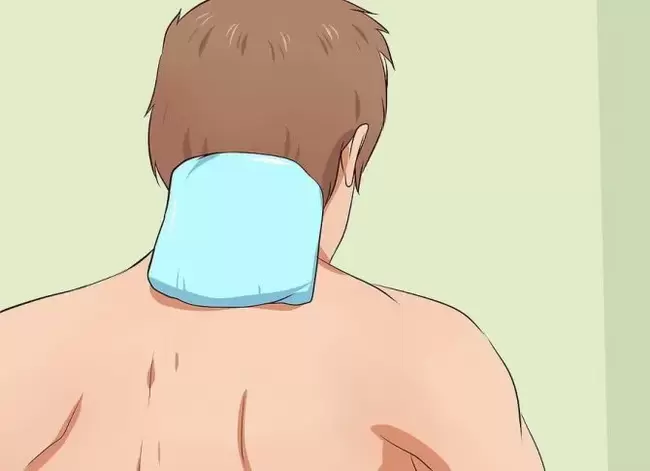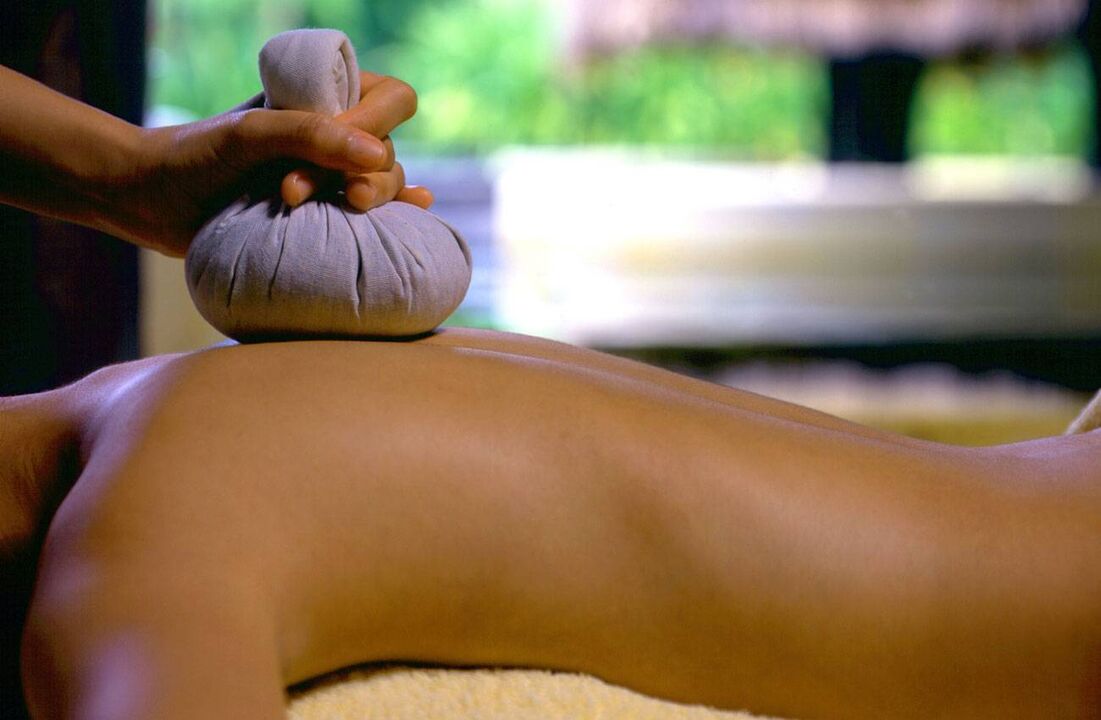
Osteochondrosis is one of the most insidious diseases of the musculoskeletal system. Its symptoms often masquerade as other diseases, causing a lot of discomfort and distress. The appearance of cervical spondylosis is related to the influence of many factors.
symptom
Cervical osteochondrosis is associated with a variety of symptoms. Headache, tingling in the center of the chest or chronic fatigue - all these signs accompany cervical dystrophic disease.
Symptoms of osteochondrosis:
- Dizziness, sometimes leading to loss of consciousness or fainting.
- Creaking noises when trying to spin or turn your head.
- Draw pain and tingling in the shoulder, elbow, or neck.
- A tingling sensation in the arms and legs, from the fingertips to the entire extremity.
- Unreasonable indifference and lethargic appearance. Accumulated fatigue persists even after prolonged sleep or passive rest.
- Tinnitus (tinnitus for no apparent reason).
- Hearing loss or blurred vision.
- Pain in the breastbone and numbness in the hands or feet.
| syndrome | reason | Performance |
|---|---|---|
| root | Compression of the spinal nerve. | Severe pain during exercise. |
| reflection | Pinch the nerve. | Severe pain radiating to arm, headache. |
| compression of the spinal cord | Pinch blood vessels, intervertebral hernia. | Loss of feeling in hands, shoulder girdle and neck pain. |
| brain | Spinal circulation disorders. | Fatigue, irritability and nervousness, disorientation and fainting, headache and hearing impairment. |
| vertebral artery | Squeeze the artery. | Stroke, cerebral ischemia. |
Important note: The neck is one of the most important parts of the spine due to the accumulation of numerous nerve trunks. Even a slight displacement of 1-3 mm of vertebrae can lead to disruption of blood circulation to the brain and can lead to high blood pressure, migraines. Less to cerebral hypoxia, stroke.
During the past 2 years, doctors have noticed osteochondrosis in young people. If the earlier risk group was representative of middle-aged and older adults, the disease is now increasingly common in people under 20-30 years old.
The danger of any symptoms of osteochondrosis is that they are attributable to other diseases and the call to a specialist is too late. This makes it possible for the disease to become chronic and cause irreversible damage to cervical anatomy.
Causes of osteochondrosis
Each segment of the spine is built according to one principle: the soft pulp within the vertebra absorbs all the structure of the segment, loses elasticity and becomes ossified. Pathological processes affect nerves and blood vessels.
To understand the causes of osteochondrosis, consider the problem medically.
| factor | describe |
|---|---|
| physiological process | Cartilage tissue ages due to irreversible age-related changes. It is regulated by neural and endocrine processes. |
| pathological process | Destruction of vertebral structures, nerve endings, and blood vessels. |
| Physiological changes | Dental pulp is transformed into fibrous tissue caused by aging of the body. If the ganglion is not stimulated, it will not manifest clinically. |
| lesions | Located in cartilage and other parts, it stimulates nerves and compresses blood vessels. Presents with local pain and dysalgesia - a reflection of pain. |
Pathological changes in the vertebrae are accompanied by:
- Deposition of salt in the nucleus pulposus.
- Vertebral structures penetrate into adjacent segments (herniation).
- Erase and wear of the cervical spine section.
- Ossification of articular soft tissue.
Causes of osteochondrosis:
- Autoimmunity - a disease that causes a degenerative process of cartilage tissue.
- Infectious - the presence of pathogenic microorganisms leads to metabolic disturbances in the tissues and can trigger pathological processes in the joints.
- Involution - the body's natural aging process.
- Traumatic - develops pathology as a result of injury.
- Endocrine - hormonal imbalance.
- Metabolic disorders - degenerative processes due to metabolic failure.
- Genetics - congenital disorders of the development of joints, cartilage. Anatomical disorder.
- Staying in one position for a long time.
- Being overweight - increases the load on the neck area and can lead to metabolic disturbances.
- Nervousness and prolonged exposure to stressful situations.
- Rheumatism.
Folk treatment for cervical osteochondrosis
In addition to conservative medical methods, folk methods are also very effective in the treatment of cervical osteochondrosis.
Healing with herbs
There are many reasons why phytotherapy is widely used for osteochondrosis of the neck: few contraindications, high availability, high efficiency, the cumulative effect of using tinctures and decoctions.
Preparation of decoction
1 liter of water should be placed in an enamel bowl and a collection of 5-6 tablespoons should be added. Bring the broth to a simmer for about 15 minutes.
Alcoholic tinctures from herbs such as wild rosemary, burdock, climber, inulin, sage, and yarrow are used both externally and internally. The principle of preparation of tincture is as follows:
- Put 2-3 tablespoons of crushed plant in a 250ml container with medicated alcohol
- Age the infusion in a cool dark place for at least 14 days. All the above herbs are suitable for cooking.
Preparation of the brew: Pour 4-6 tablespoons of crushed vegetable stock into a 1-liter jar, followed by boiling water. Cover the jar and leave in a dark place for 24 hours.
compression
The easiest treatment is to use a compressed salt solution with brucite. The high efficacy of this method is proven, and the main principles of treatment are regularity and long-term effects. A bandage made of a soft cloth or bandage is placed on the neck for an extended period of time.

Salt compress: Prepare a 10-11% saline solution (100 g per 1000 ml of water). In the resulting solution, a gauze folded in several layers is moistened and applied to the neck. Lay the poly over it and wrap it in a warm scarf. Compression must be done 1-2 times a day for about 10-14 days.
ointment
You can fight cervical osteochondrosis with homemade ointment. For their preparation: herbs, plant roots, vegetable oils and animal products - fats, poisons, bile, eggs.
Ointment formula:
- Combine yarrow, lavender, horsetail, and dandelion root (pre-crushed) in equal proportions.
- Pour 2-3 tablespoons of the collection into the boiling water and simmer over low heat for 5 minutes, stirring constantly.
- After cooling, the resulting mixture is mixed with 75 g of any vegetable oil and 75 g of animal fat until a homogeneous mass is obtained. Rub on neck for 4-5 minutes 2-3 times a day.
wipe
Rubbing will help relieve neck pain with osteochondrosis. The effectiveness of this approach is that it has complex effects. Rubbing the neck with tinctures and ointments is effective for exacerbations and complex treatments. Due to the mechanical action on the skin, bioactive substances can easily penetrate into the tissues.
Rub from ointment (recipe above): Take a small amount of ointment and rub in palm. Then, in a vigorous stroking motion, rub the ointment onto the neck, after which it must be insulated with a woolen scarf. Perform this procedure 1-2 times a day in a row for at least two weeks.
warm up
This exposure method is used in cervical osteochondrosis to remove toxins accumulated in cartilage tissue and improve blood and lymph microcirculation. Herbal baths, saunas, special heating pads, baked or boiled potatoes (in the form of mashed potatoes and honey cakes), salt bags or sand bags are suitable for warming up. After warming up, it is more effective to use tinctures, ointments, and compresses.

To warm up, you'll need sea salt and a bag made of dense natural fabric -- better than linen. The salt needs to be heated in a pan and poured into the bag. Apply to affected area 2-3 times a day. After surgery, wrap a warm scarf around your neck and don't go outside, especially during the colder months.
massage
This method is only used during remission - in the absence of severe pain and other acute symptoms of osteochondrosis.
The healing properties of massage have long been known and are one of the best ways to get rid of osteochondrosis in the neck. Various massage techniques allow you to relieve spasms in the muscles around the spinal segment:
- Shiatsu;
- classical;
- were able;
- vacuum;
- Thailand;
- Self massage.
This effect entails improving local blood circulation, reducing swelling, eliminating neck pain, improving tissue metabolism, restoring neck mobility and restoring atrophied muscles.
Self-massage for osteochondrosis is done sitting or standing with a flat back and feet shoulder-width apart. You can use one or both hands to perform the following techniques:
- Warm up by rubbing the neck and collar area with your palms.
- Grab the neck with your hands so that the thumb is in front and the rest from behind. In this position, hold four fingers along the entire neck and collar area, from the spine to the periphery, for 2-3 minutes.
- Use pressure in circular motions with your fingers while covering as much of the neck surface as possible. Continue for 1-3 minutes.
- Rub vertically along the spine with your fingertips - 1-2 minutes.
Gymnastics for osteochondrosis
A quick cure for osteochondrosis is nearly impossible, but special exercises will help speed up the recovery process.
A set of exercises for cervical osteochondrosis includes:
- Head side-to-side rotation - Repeat 5-6 times in both directions, gradually increasing the amplitude.
- Raise and lower shoulders - 10-15 reps.
- Head tilt from side to side - 10-12 reps in both directions.
- Extend your head forward - In a standing position, extend your head as far forward as possible, then return to the original position. Repeat 10-15 times.
- Cobra: On all fours, gently extend the head forward, align the legs and lift the head. Try to lower your hips to the floor. Lock in this position for a few seconds, then slowly return. Repeat 4-9 times.
The last exercise helps to relax the neck muscles, restore blood supply, and remove pinching on blood vessels and nerve endings.
All exercises are performed slowly, steadily, and in increasing amplitude. The number of repetitions and the number of approaches are determined individually.
Nutrition for cervical osteochondrosis
Due to joint damage, nutrition should be balanced and divided - 5-6 times a day in small servings.
Limit your intake of salt, simple carbohydrates, spicy and fried foods.
Include foods high in calcium, magnesium, and phosphorus in your diet—these are vegetables, fish, meat, stewed or roasted vegetables.
To effectively combat cervical osteochondrosis, increase your intake of clean water (at least two liters per day).
prevention
The disease is easier to prevent than to cure. To reduce your risk of osteochondrosis, take the following precautions:
- use a comfortable place to sleep - orthopedic mattresses and pillows;
- engage in regular physical activity;
- work in a well-organized place in sedentary conditions;
- The body remains still, gymnastics rest;
- Do not overeat;
- Don't carry a shoulder bag.
Contraindications
The main contraindications are:
- Physical overload caused by prolonged stationary postures;
- Deliberately squeezing the neck joints;
- Eating lots of sweets and starchy foods;
- weightlifting;
- sleep on soft mattresses and large pillows;
- Hypothermia in the neck area.
Treatment of osteochondrosis should be complex. Neck osteochondrosis can be relieved by a combination of various treatments and methods based on recommendations for nutrition and physical activity. While alternative treatments are effective, seek prompt help from an orthopaedic or osteopath, as self-treatment can pose health risks.


















